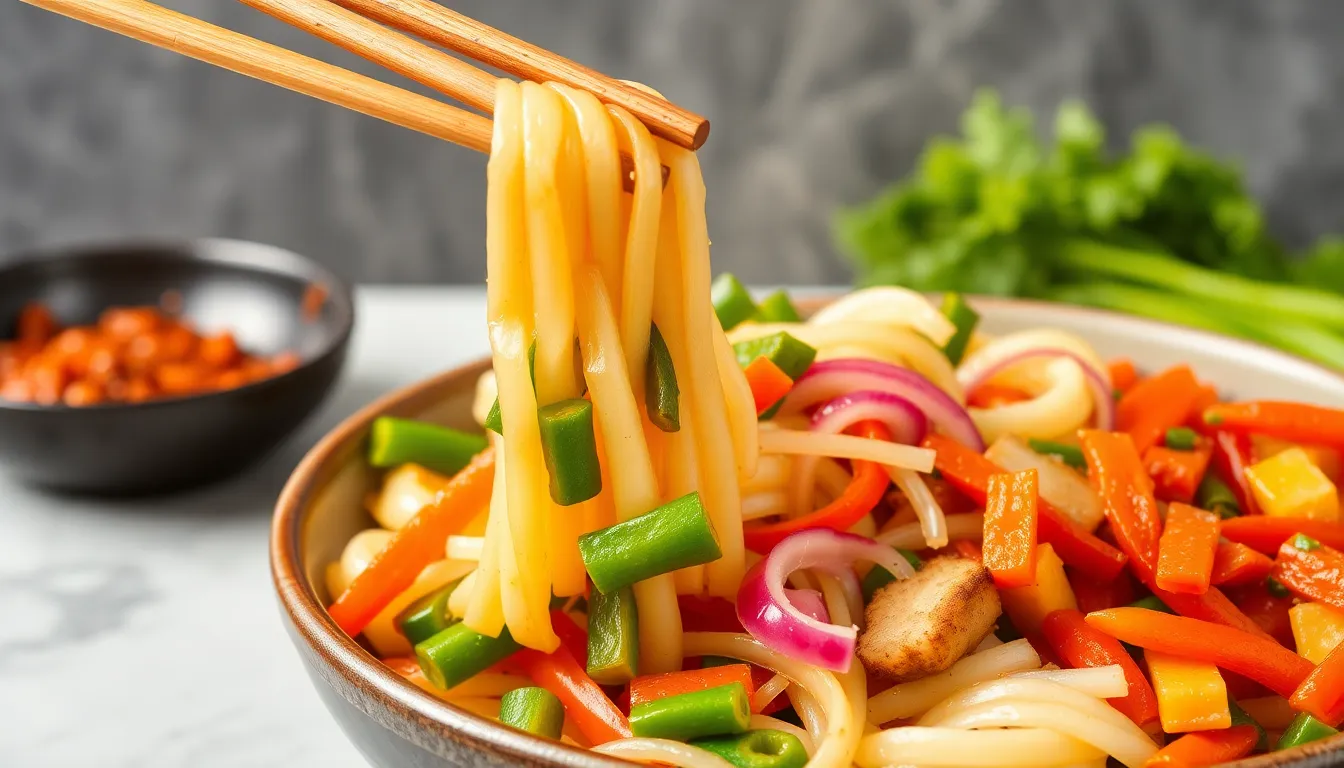The Best Vegetables for Stir-Frying: A Quick Guide
Introduction
Stir-frying is a beloved cooking technique that originated in Asia, known for its ability to produce quick, flavorful dishes. This method involves cooking food quickly over high heat, usually in a wok or a large skillet, while stirring constantly. The result is a medley of vibrant vegetables that retain their crispness and nutrients, making it a popular choice for health-conscious individuals.
Choosing the right vegetables is crucial for achieving the perfect stir-fry. The ideal vegetables not only enhance the flavor and texture of the dish but also provide a balanced nutritional profile. This guide aims to help you select the best vegetables for your next stir-frying adventure, ensuring a delicious and healthy result every time.
Section 1: Why Stir-Frying?
The stir-frying technique is characterized by its high heat and quick cooking time. This unique method allows the natural flavors of the ingredients to shine while keeping them vibrant in color and crisp in texture.
High Heat and Quick Cooking
Stir-frying typically involves cooking food at temperatures exceeding 400°F (200°C). This high heat helps to sear the ingredients rapidly, locking in moisture and preventing them from becoming mushy. The quick cooking time is essential for preserving the nutrients in vegetables, making stir-frying a healthful option.
Retains Nutrients and Flavors
Because of its fast cooking process, stir-frying minimizes the time that vegetables are exposed to heat. This helps to maintain vitamins and minerals that can be lost during longer cooking methods. Furthermore, the quick searing process enhances the natural flavors of the vegetables, resulting in a dish that is both delicious and nutritious.
Benefits of Incorporating Vegetables into Stir-Fry Dishes
Stir-frying is a fantastic way to include a variety of vegetables in your diet. Incorporating different vegetables not only adds color to your plate but also ensures a range of textures and flavors. Additionally, the quick cooking method allows you to retain the crunchiness of vegetables, making each bite satisfying. Here are some other benefits:
- Quick and easy to prepare
- Versatile—can mix and match various vegetables
- Ideal for meal prep
- Low in fat if done correctly
Section 2: Essential Vegetables for Stir-Frying
When it comes to stir-frying, some vegetables stand out as essential ingredients. These vegetables not only cook well at high temperatures but also offer a delightful taste. Below are the categories of vegetables that are perfect for stir-frying:
2.1 Leafy Greens
- Spinach: Quick to cook and a nutritional powerhouse.
- Bok Choy: Crisp and slightly sweet, adds great texture.
- Swiss Chard: A colorful option that brings a mild flavor.
2.2 Cruciferous Vegetables
- Broccoli: Retains its crunch and bright color.
- Cauliflower: Versatile and absorbs flavors well.
- Brussels Sprouts: Provides a unique taste when sliced thinly.
2.3 Root Vegetables
- Carrots: Sweet and crunchy, adds color.
- Bell Peppers: Available in various colors, sweet and juicy.
- Radishes: Adds a peppery bite and crispness.
2.4 Other Popular Choices
- Snap Peas: Adds a natural sweetness and crunch.
- Mushrooms: Perfect for soaking up flavors and adding umami.
- Zucchini: Softens slightly while maintaining some crispiness.
Section 3: Nutritional Benefits of Each Vegetable
Understanding the nutritional benefits of the vegetables you choose can help you make healthier decisions. Below is a brief rundown of the health benefits associated with the vegetables listed in Section 2.
| Vegetable | Calories (per 100g) | Fiber (g) | Vitamins |
|---|---|---|---|
| Spinach | 23 | 2.2 | High in Vitamin A, C, K |
| Broccoli | 34 | 2.6 | High in Vitamin C, K, and Folate |
| Carrots | 41 | 2.8 | High in Vitamin A and Antioxidants |
| Bok Choy | 13 | 1.0 | Rich in Vitamins A, C, and K |
| Zucchini | 17 | 1.0 | High in Vitamin C and Manganese |
Section 4: Tips for Preparing Vegetables for Stir-Frying
Proper preparation of vegetables is key to ensuring a successful stir-fry. Here are some tips to help you get the best results:
- Cut Uniformly: Cut vegetables into uniform sizes to ensure even cooking. Thin slices or bite-sized pieces work best for quick cooking.
- Wash and Dry: Rinse vegetables thoroughly to remove dirt and pesticides. Use a salad spinner or a clean towel to dry them to prevent excess moisture during cooking.
- Preheat Your Wok or Skillet: Make sure your cooking surface is hot before adding oil. This helps create a non-stick surface and enhances the cooking process.
- Use High-Quality Oil: Oils with high smoke points, like canola or peanut oil, are ideal for stir-frying. These oils can withstand high temperatures without burning.
- Add Vegetables in Stages: Start with the vegetables that take longer to cook, such as carrots and broccoli, and gradually add those that cook faster, like leafy greens.
Conclusion
Stir-frying is a fantastic way to create delicious, healthy meals quickly. By choosing the right vegetables, you can enhance the flavor, texture, and nutritional value of your dishes. Whether you’re a seasoned cook or a novice in the kitchen, this guide will assist you in selecting the best vegetables for stir-frying, ensuring that each meal is both enjoyable and wholesome.
Next time you’re in the kitchen, remember these tips and experiment with different combinations of vegetables. Happy cooking!




